|
Originally published in ALLAN McCOLLUM Stedelijk Van Abbemuseum Eindhoven, Holland; 1989 |
||||||||||||||||||||||||||||
|
Allan McCollum: The Art of Duplicitous Ingemination |
||||||||||||||||||||||||||||
 Allan McCollum. Over Ten Thousand Individual Works (detail). 1987-88. |
LYNNE COOKE
'THE QUESTION OF NUANCE (within unity) is linked to the model, while difference (within uniformity) is linked with mass-production. Nuances are infinite, they are an inflexion, renewed continually by invention within a free syntax. Differences are finite in number and result from the systematic bending of a paradigm. We must not make a mistake here: if nuance seems rare and the marginal difference unquantifiable, because it benefits from being diffused widely, structurally it is still only the nuance which is inexhaustible. (In this way the model is linked to the work of art).BAUDRILLARD'S SUCCINCT analysis of the fundamental differences between the model and the serial object seems particularly pertinent to Allan McCollum's art, and especially to the Individual Works. This, his latest piece, has comprised in its showings to date some 10,000 small objects, each of which is cast in plaster then painted a shade of artificial aquamarine (a second version is rendered a kind of salmon pink). Each element is, as the title implies, distinctive, there are no repeats, no two exactly alike. The overriding impression of similarity or family resemblance, (plus their haunting familiarity) derives from the fact that each is cast from combinations of up to eight from a total of 150 moulds taken from such mundane things as yoghurt containers, drawer pulls, cake decorating implements etc... Given their small dimensions together with the fact that most of them lack an obvious base, reclining easily on any of several sides, they do not seem to belong to an identifiable context but rather invite being handled, even fondled. Intimate, domestically scaled and apparently functionless they become paradigmatic possessions. PRESENTED IN SUCH quantity they clearly allude to mass production without, however, being wholly determined by automated manufacturing methods: each is cast in two parts then joined by hand and the seam effaced. McCollum, moreover, rejects certain combinations of shapes on aesthetic grounds. When exhibiting them on large table like surfaces covered with black velvet, he places them in serried rows. Such a presentation is quite unlike that generally accorded manufactured objects in bulk: when stockpiled they tend either to be massed and heaped—think of nails or screws—, or if more expensive, displayed in artificially limited numbers to accentuate their supposed individuality and rarity—as occurs with so-called designer clothes. McCollum's objects lie somewhere between the mechanistic and the crafted; between the handmade and the serially reproduced, but like most mass produced objects their differences are marginal, a matter of appearance alone. THIS AMBIGUOUS IDENTITY is reinforced in other ways, too. When presented in catalogues they usually appear in dual guises. Firstly, alone in tasteful close-up: usually isolated, occasionally coupled, they are depicted in spare surroundings and with the kind of dramatic spotlighting typically accorded a valuable or precious object. In contrast to these refined portraits, reminiscent of something like a Sotheby's catalogue, there are the group shots where they are seen en masse. Sometimes these take the form of details cropped from the larger whole, sometimes the entire table surface is shot from a distance, so that the heterogeneity is reduced to a homogeneous mass. Despite their apparent conformity to Baudrillard's characterisation of serial reproduction, their identity is not fully exhausted by such an account. Not being models in Baudrillard's sense they should not be art. It is their context that confers on them their status as an art-work, or at least that taken in conjunction with their uniqueness and their ostensible purposelessness as cultural artefacts. THIS COUPLING OF an elusive identity and distinctive means of display produces very ambivalent responses, evident in the striking tendency of many critics to see them as childlike versions of malign weapons stockpiled in frightening numbers. The following is typical: 'The sea of blue plastic (sic) forms brings to mind an assembly line of toylike projectile missiles and hand grenades gone amok as in the "Sorcerer's Apprentice'."2 The equivocal blending of attraction and repulsion in this reaction is telling. While clearly recalling the uniformity and seriality of modern assembly-line production, they stubbornly maintain a teasing distance from it: they are consequently very different from consumer goods elevated to the status of cultural icons. Conversely, other critics have emphasized their minimal individuality, seeing them as bibelots, potential personalised fetishes.3 Yet this too is brought into question by the fact that they cannot, as yet, be purchased singly, or even in bulk. The borderlines of the work remain ambiguous and elusive. Ten thousand is to McCollum the smallest number that fully conveys the notion of mass production. However, once he has established this aspect of their identity in the minds of his audience, he anticipates exhibiting smaller quantities, 'bulk lots' from the larger whole.4 THE DIFFICULTY OF determining their identity depends as much on a perception of their matter as on their morphology. That they are made from plaster is crucial. Plaster is the material associated above all with reproduction, with intermediary states, with copies and replicas. It is a material that has not succumbed to new methods of working, to modern technology, being handled in virtually the same way today as it has always been in the past. Since the time honored ways of working it cannot be speeded up or further simplified it remains in effect an old fashioned artisanal technology, certainly not a distinctively modern one. Both in the manner that they have been made and in their forms these objects are far removed from the shapes and look of ultra-contemporary design with its distinctively hi-tech appearance.5 Breakable rather than robust, complicated rather than streamlined, with their lurid colour they have a somewhat out-dated feel, vaguely suggestive of an almost-past era, the era of manufacturing in contrast to the emergent digital, media dominated culture.
WHILE TREATING THE gallery explicitly as a place of commerce, McCollum at the same time acknowledges, albeit ironically, that it is also a shrine for the hallowed art object. Although cast as a single entity, the black interior, white mat and frame of each Plaster Surrogate is rendered by hand. While assistants do most of the actual manual work McCollum ensures that each is unique and 'authentic': there is no repetition. Within some twenty odd standardized sizes he achieves seemingly infinite differences by altering the tones of frame and mat. Moreover it has been his practice to paint the outer edge of the black interior as well as the inner border of each frame himself, prior to signing the work on the back and giving it its code number. Thus in addition to analysing the value of the art-work, interpreted in the widest sense, McCollum addresses related issues pertaining to its signifying properties, to questions of originality, and authorship: in short, the framing conventions as well as the institutions and social structures which give the art-work its identity are his cardinal concerns. WHEN ASKED ABOUT early influences on his thinking while a young artist living on the West Coast McCollum singled out several exhibitions which he regards as important. The first of these was a show in 1967 of watercolours by Ed Kienholz.7 Each work was inscribed with a monetary sum or description of an object which Kienholz designated as the price of that particular work. The second was an exhibition (which McCollum read about), staged by BMPT, the shortlived Paris-based group of Buren, Mosset, Parmentier and Toroni who presented their standardized canvases as a single huge work for one hour on the stage of a theatre to which their audience had been specially invite.8 If the subject of the first show was art as an object in a system of exchange, the second was of an art that moved into different arenas, that humorously presented itself as spectacle, that staged itself as an event to be repeated over and over divesting viewers of any illusions they might harbour about the transcendental nature of art, highlighting instead its cultural, historical, and sociological content. McCOLLUM'S DECISION to become a painter was a deliberate one. At a time when many artists were tending to abandon painting in favour of other modes, materials and ways of working he was determined to push its literalness to other ends. In the early seventies he explored ways of stripping it down to a kind of negative of itself, bleaching out the colour of the canvas with chemicals in order to create a ghostly image. On other occasions he painted over puzzle-like patterns which had been off-set printed then fitted together into interlocking systems that were, like wall-paper, infinitely reproducible in indefinite amounts. WHEN HE MOVED TO New York in 1975 his concern with art as an entity in a system of socio-economic exchange must have been greatly reinforced by the intense interest manifest there in the writings of certain French theorists. The strong influence wielded at that time by such writers as Baudrillard and Foucault needs, however, to be seen against a background of growing corporate involvement in the arts, both through direct collecting and through museum sponsorship, as well as in relation to the enormous surge in the market for contemporary art, in which New York inevitably played centre stage, as the preeminent place for the creation, display, sale, and consumption of current work of all types.9 John Roberts argues that the enormity of the influence of these two writers derives from the ways in which 'their diabolistic theories of social control seems to verify the extended alienation of the subject under an image-saturated American late capitalism.'10 He continues, 'The received frame-work from this perspective is of a particular hegemonic form of capitalism in which all social identities are mediated and articulated through consumption. Post-structuralism's view of the post-sixties West as the epoch of image domination, simulation and the "end of the industrial" has therefore found a ready audience in the States where the heritage of the Frankfurt School has maintained a sizeable hold on the left and found a sympathetic hearing from the intellectual right... Faced with the power of systems of ideological control and technological domination all that is left to the artists after the "protests" of the transcendentalist abstraction and anti-commodity politics of the late sixties and early seventies is to simulate and stage the mechanics and structures of control.'11 As the late seventies absorbed the inheritance of the Conceptualists' critique of the parameters of art production and reception, vanguard activity began to constitute itself through a reflection on the commodity status of the art-work, focussing often restrictively and reductively on what was perceived as a totalising connection between the cultural artefact and the social formation.12 WHEN IN THE LATE seventies McCollum chose to focus on the place of the art-work in a system of exchange and valuation, he continued, unlike many of his peers including Louise Lawler, Laurie Simmons and Sherrie Levine for whom photography played a key role, to work specifically in relation to painting. Equally distinctive was his preoccupation with issues concerning mass production in contradistinction to the mass media. By means of the particular format and scale he adopted for his generic substitute McCollum signalled a certain type, or archetype, of painting, even possibly easel painting devised for a domestic context. Consistently vertical in orientation, the largest his Plaster Surrogates become is 50x40cm. And by no means of a method of installation that involved exceptionally close hanging by contemporary standards, McCollum was able to allude both to the Salon, the annual site where established and establishment artists revealed their major works for appraisal and (of course) sale, and the frame shop, the downmarket counterpart to the fine art gallery, filled with serial ware. That owners should echo his approach and hang McCollum's pictures as nineteenth century collectors customarily displayed their prize specimens attests to the effectiveness of his critique. The Perfect Vehicles worked analogously in that the methods McCollum devised for showing them in public generally became those adopted by their new owners. Although the bases on which five or six of them would frequently be grouped were not part of the artwork as such most purchasers bought the plinths (paying a price commensurate with that befitting a pedestal), as the most convenient solution to the question of how to house them in private surroundings. NONETHELESS MCcOLLUM has explored a variety of other ways of presenting these two groups of works, altering the display depending on both situation and circumstance. The Plaster Surrogates have, for example, been hung in a single almost continuous line around a gallery, an installation that comes closer to, yet is still slightly at odds with contemporary practice, while the Perfect Vehicles have ringed a gallery space on a single extended shelf. On such occasions, as in group shows when smaller assemblages are (necessarily) found, the kind of reading that McCollum wished seems secure. SOMETHING DIFFERENT OCCURS, however, in the dense ensemble hangings. With a significant increase in the quantity of items, and ultimately in the scale, McCollum creates what Hal Foster has aptly termed a 'situational aesthetic,' in which particular emphasis is paid to site, address and audience.13 When several thousand surrogates are shown in one room, they reach numbers far in excess of what a private person is likely to purchase, or what a museum is liable to acquire for its permanent collection: indeed they may possibly be in excess of the total number of objects that comprise the holdings of many institutions, as well as those of most collectors. When presented en masse the larger Perfect Vehicles, too, create a situation that refers to familiar modes of exhibition looking — but taken to a level that seems to incite both pathos and laughter. This depends in part on the way that once the vessels reach a height of two meters they are on a human scale. Not solid cast like the smaller set (which are 50 cm tall) they are hollow concrete forms, identical in every respect except for the hues that they have been painted. They thus approximate closely to Michael Fried's (negative) account of a Minimalist sculpture—anthropomorphic, hollow, and theatrical, depending on situation and duration for its apprehension. McCOLLUM DOES NOT place them in rows, 'one thing after another' in Judd's phrase, but treats them as individual elements to be arranged in the space as one would autonomous monolithic sculptures. The vocabulary of Minimalism was alluded to with the Plaster Surrogates, here the seriality and repetition recall the Minimalist object: it is no coincidence that Minimalism was concerned above all with the phenomenology of the object. Taking the central paradigms of Minimalism to exaggerated ends, his installations take on a kind of ludic solemnity. The effect is unexpectedly but startlingly humorous—black humour perhaps, but humour nonetheless. This seems to reside partly in the sleight of hand, the constantly shifting identity: an art event as art work made from serial entities. But it stems primarily from the actuality of the installation, its expressive quotient, heightened visceral impact and sheer beauty in the face of a reductive conceptual negativity. Encountering them en masse in real time and in specific context the spectator teeters between fear and wonder, delight and horror, attentive equally to what McCollum designates in Kleinian terms 'the nurturing object and the persecuting object.'14 McCollum thereby disspells the audience's conventional expectations of art by fulfilling them beyond their wildest dreams. And if, as Ulrich Wilmes persuasively argues, the quality of McCollum's works as signs representing pictures or sculptures is basically independent of the form of their presentation,15 (and the didactic supplements are therefore otiose) then by means of an eloquent staging the attempt to deconstruct the role of the art-work in the market economy can at the same time convey intimations of alternative possibilities. IN A BRIEF but acute essay, Freud distinguishes humour from the comic and the joking: 'Like jokes and the comic, humour has something liberating about it, but it also has something of grandeur and elevation, which is lacking in the other two ways of obtaining pleasure from intellectual activity. The grandeur in it clearly lies in the triumph of narcissism, the victorious assertion of the ego's invulnerabilty. The ego refuses to be distressed by the provocations of reality, to let itself be compelled to suffer... (and) asserts itself against the unkindness of the real circumstance,'16 According to Freud humour entails an appraisal of reality that is not resigned but rebellious. Lacking the intensity of the comic or of jokes, it is nonetheless capable of being deeply if subtly subversive. If its impact is first manifest in McCollum's art in the saturated hangs of the Plaster Surrogates it becomes clearer and more affirmative in its expression in the large Perfect Vehicles, and consummately so in the Individual Works. Since its components are not signs for painting, sculpture or photography but new entities that, taken singly, resemble mass produced items but en mass assume a more contradictory identity. McCollum inverts the logic of his previous pieces. That he has been able to effect this depends on, and is intimately intercalated with, the constant restaging through exhibitions of the other series. McCollum thus pits it against itself to create something like a mass-produced artefact that operates as a revered vanguard artwork, playing between the way the artist may confer value and the way in which the context does (for him it is no longer primarily the artist who confers the status of artwork on the object as Duchamp believed but the framing institutions): 'I try to remedy this alienation [from canonical high art works] by basing the value of my work on a new kind of model, a model based on abundance and availability, not uniqueness and exclusivity.'17 IN THESE INSTALLATIONS in particular, though throughout his project in general as its ever increasing numbers expand exponentially, McCollum is able to postulate a positive vision. He achieved this initially by taking ironic affirmation to the state of duplicitous humour: for this he relies on sheer excess of numbers as well as on manipulating the situations in which his works are encountered in ways that no one else could easily replicate. Conversely, when the elements are dispersed in small groups or even singly, the disquieting rhetoric of the ensemble staging gives way to something more impenetrable, and reticent. They become prescindent signs, their sensual visceral properties high lighting the absence of resolved desire, the contingency of transcendental experience. In the Individual Works, how ever, he postulates a new entity, by taking Baudrillard's serial object into the arena of fine art in singular fashion, establishing a dual identity—artefacts that are simultaneously an art-work (as distinct from artefacts raised to the level of an art-work). He thereby questions the conventional division of artistic labour in a society that restricts the artist to the manufacture of sacrosanct luxury items as prestige symbols that serve primarily to reinforce the exclusionary class based status quo. For McCollum the Individual Works 'distrupt this conventional ideology and capture industrial techniques into the register of artistic practice.'18 This activity has therefore become what he calls 'counter-intuitive'; that is, it sets itself against the grain of normal behaviour and customary expectation, finding in mass reproduction the potential for a positive and vital expression contrary to current belief; indeed, it carries its own type of aura, one that warrants serious recognition.19 THIS REFUSAL TO adopt a fixed identity for the works, so that they remain deliberate fictions, 'false' art-works, which yet represent more than simply tokens of exchange and barter, has parallels with certain non-western artefacts. Two examples may indicate the affinity. The first concerns the toas, or 'sign-posts', which several groups of Australian aborigines fashioned in the early twentieth century expressly to meet the rapidly growing demands/needs/expectations of missionaries and traders for artefacts and sacred objects. Long considered by Western anthropologists to be topological markers, they have only recently been revealed to be deliberate inventions, that is objects with no pre-European function embroidered with stories by the Aborigines for the benefit of their purchasers. What seems to have happened is that a novel shape was created then decorated with patterns and colours akin to those used on other artefacts with acknowledged geographical and mythological roles.20 This revelation led a number of anthropologists to regard the toas as hoaxes, items made for purposes of trade alone and embellished with stories by the aborigines for the benefit of their purchasers. However, what is really at stake is not the question of whether they are fakes but the realisation that they are artefacts with a new role in a complex shifting situation. By following James Clifford's repudiation of what he calls the 'salvage paradigm'—the preoccupation with rescuing only the pure and authentic pre-European artefact out of situations of destructive historical change21—it becomes possible to regard these tribal objects as the valid products of a creative tradition made by a people resisting, reinventing, reappropriating and reinvigorating in order to produce a new culture—and not as the degenerate products of a culture undergoing destruction. A new definition of authenticity is required, one in which it is reconceived as hybrid, creative activity in a local present. THE SECOND EXAMPLE concerns the items which are made by contemporary North American Indians based on artefacts conceived for very different purposes by their ancestors and now housed in museums.22 Clifford describes how the Provincial Museum of British Columbia has for some time ago encouraged Kwakiutl carvers to work from models in its collection, and has lent out old pieces and donated new ones for use in modern potlatches. The ancient artefacts are rescued from a sterile fate, as decontextualised museum exhibits designating a lost past, to become cultural artefacts in an ongoing changing tribal tradition. Clifford contends that today it is not just inappropriate but utterly misguided to search for objects from the periods when these tribal societies were in an 'untouched' state, treating them as the only worthwhile items of interest and value fore either the antrophologist or the art connoisseur. What is required is to recognise that in a dynamic fluid society new forms and elements will be needed and devised. And, furthermore, that these will not be invented in a vacuum, but will arise out of a cross fertilisation and interchange between existing modes from both within and without that society: such mixed cultural symbols will in turn require a flexible taxonomic system.23 McCOLLUM HIGHLY values practices based in popular or communal traditions and rooted in everyday participatory activity, as is found, for example, in the production of folk art, as well as in the manufacturing of artefacts in many non-western societies marked by a state of equilibrium and continuity: 'I basically see the highest possible state of [the] arts as a totally traditional art in a stable world. True delight in making an object would then originate in the act of making it in participation with other people, people with whom you share a world. Constant attempts at making something new are symptomatic of a world in which nothing is shared and nothing is right, thus condemning us always to try to make it right.'24 IN McCOLLUM'S MOST recent work that other arena of influence to which he also pointed as formative—the writings and works of Fluxus artists—seems to have become more evident than hitherto. His interest was first aroused in the sixties by the small booklets published by the Something Else Press that featured the writings, proposals and manifestoes of a number of Fluxus proponents ranging from George Brecht through Alison Knowles to John Cage: since at that stage he had very little knowledge about art, they made a considerable impression on him. In general, Fluxus was not concerned with annihilating the boundaries between art and life but with working on the borders between, or just beyond, art and non-art; it therefore became of the utmost importance that such borders should be understood. Central to its thinking too was an ideal of collective enterprise, in contrast to what was regarded as the excessive individualism of most art activity, and a search for a non-competitive, understated haiku-like modes, humorous, simple, even seemingly insignificant in their expression. The 'true' Fluxus artist endeavoured to establish a non-elitist, non-professional and non-parasitic relationship with society, according to George Maciunas, its principal spokesman, who wrote in 1964 that 'the value of art amusement must be lowered by making it unlimited, mass produced, obtainable by all and eventually produced by all... It strives for the monostructural and non-theatrical qualities of a simple natural event, a game or a gag'.25 Its goal being 'the total elimination of institutional art', the best Fluxus composition was, for him, the one which was most strongly impersonal and ready-made. If the Fluxus members were more concerned with gesture, game and event than McCollum is, what is most notable about this connection is the similarities that may be discerned in the models of an artist and of art practice that each proposes. TWO MAJOR group exhibitions of contemporary art held simultaneously in mid-1989, one in the United States, the other in Europe, could be seen to summarise the central concerns that have dominated much of the Western art world during the 1980s. A Forest of Signs, at MoCA in Los Angeles, comprised some thirty North American artists whose work had come to maturity during the decade, and who were linked primarily by shared attitudes to certain theoretical ideas, most notably to the question of representation, though, in addition, virtually all of them employed photography and/or language and ready-made objects/commodities.26 Magiciens de la terre, in Paris, was altogether different.27 With approximately one hundred artists from across the globe, its guiding theme was a consideration of what art is or might be, and what its counterparts elsewhere, in ritual and in sacred artefacts, have become. An enormously ambitious enterprise, it was necessarily openended, contradictory and problematic, taking in a number of generations, a multiplicity of types of activity, as well as vastly different conceptions of art and its roles. McCOLLUM'S ART was pertinent and apposite to both shows, equally, despite their very fundamental differences in impulse and agenda. For what differentiates him from his immediate peers, like Lawler and Simmons with whom he has at times collaborated, is his commitment to the handmade artefact, a commitment expressed even in his approach to photography. Through this he has been able to prompt reconsideration, from an anthropological viewpoint, of both functions that art serves in contemporary western society, and of the models that are customarily deployed for artworks, artefacts, technological products and even curios, together with their methods of interaction. In a rapidly changing situation heightened attention to the unexpected possibilities that may be opened up by such re-thinking is perhaps inevitable. It does not necessarily follow, however, that the most eloquent solutions will be either those that involve the self-consciously new, or alternatively those that steadfastly seek to maintain the traditional. Something more encompassing and hybrid, something syncretic and impure may answer better to a nascent polycultural reality marked by novel material conditions, evolving social topographies, and enduring psychological needs. That McCollum's art offers an incisive critique of current conditions has not prevented it from also taking on a teleological orientation.
Footnotes: 1. Jean Baudrillard, The System of Objects, 1968, reprinted in Design After Modernism, ed. John Thackara, London, 1988, pp.. 178-179. 2. Unattributed statement, 1989 Biennial Exhibition, New York: Whitney Museum of American Art, 1989, p. 97. 3. Andrea Fraser,"Individual Works," in Individual Works: Allan McCollum, John Weber Gallery, 1988, n.p. 4. McCollum initially considered selling them singly but abandoned the idea because no gallery would have been equipped to do this; his next thought was to release them wholesale. in "lots" of a dozen gross (576). He then shelved that preferring at least for the present to keep them together in order to show them in a more theatrical way. 5. Peter Dormer argues that since most objects in the world are in space, naturally these things provide the imagery for new design; that is, advanced technology now provides the most vital source for new visual metaphors in product design. "The Ideal World of Vermeer's Little Lacemaker," in Design After Modernism, op. cit., p. 144. 6. For example, he arranged to have the photograph taken of the installation of the five Surrogate Paintings, in the Paine Webber Collection, and then made it readily available for publication. See "Allan McCollum," Portikus, Frankfurt am Main, 1988, p. 6. 7. Reviewed by Jane Livingstone, "Edward Kienholz," Artforum, Summer 1967, p. 66. 8. The article that described this event was Otto Hahn's "All or Nothing," Arts Magazine, Summer, 1968, pp. 38-40. 9. Ref. Brian Wallis, "The Art of Big Business," Art in America, June 1986. 10. John Roberts, Review of Peter Halley: Collected Essays 1981-1987, in (Artmonthly, March 1989, p. 27. Although McCollum read these authors, at the time he was more interested in Barthes, Piaget and Lacan). 11. Ibid. 12. Writing in 1972, Leo Steinberg noted the recent alliance between art and commerce. He then continued: "but this is only the practical man's amiable way of assimilating what had long been forbidden... Americans have always felt suspicious and uneasy about art. Traditionally, the idea of art has had too many untoward associations—with High Culture and High Church religion, with aristocracy and snob appeal, with pleasure, wickedness, finesse. To American minds, the word "art" is the guilty root from which derive "artful," "arty" and "artificial." Whence the perpetual need to call art by some other name... But the pervasive character of American artistic culture, whether for good or ill, for sport or for real, derives from an initial posture of repudiation. "Other Criteria," in Other Criteria: Confrontation with Twentieth Century Art, Oxford University Press, 1972, pp. 56-57. 13. Ref. Hal Foster, "Subversive Signs," in Recodings: Art, Spectacle, Cultural Politics, Seattle 1986, p. 100. 14. Quoted in D.A. Robbins,"An Interview with Allan McCollum," Arts Magazine, October 1985, p. 44. 15. Ulrich Wilmes,"Allan McCollum," Portikus, op. cit., p. 20. 16. Sigmund Freud, "Humour" (1927), reprinted in The Pelican Freud Library: Volume 14 Art and Literature, Penguin, 1985, p. 428-429. 17. McCollum quoted in Dan Cameron, "Signs of Empire," in Dan Cameron, NY Art Now: The Saatchi Collection, England, n.d., p. 15. 18. Quoted in "Allan McCollum," Portikus, op. cit., p. 57. 19. Interview with author, July 14, 1989. 20. Ref. Philip Jones and Peter Sutton, "Art And Land," in Art And Land: Aboriginal Sculptures of the Lake Eyre Region, South Australian Museum, 1986, p. 59ff. 21. James Clifford, "On Collecting Art and Culture," in The Predicament of Culture: Twentieth-Century Ethnography, Literature, and Art, Harvard University Press, 1988, p. 248. 22. James Clifford, "Of Other Peoples: Beyond the Salvage Paradigm," in Discussions in Contemporary Culture: Number One, ed. Hal Foster, Seattle, 1987, pp. 121-130. 23. It is worth noting that McCollum worked for some time in the registrar's department at the Cooper-Hewitt Museum where his job was to make condition reports on objects coming in for exhibition. He remembers one case which involved some nine hundred different pencils destined for an exhibition on the Art of Writing and another that again involved vast numbers of very ordinary mass-produced objects. Among these a group of some nine or ten thousand cheap Indian bracelets, mass-produced but in a very old-fashioned handicraft-like way, made a strong impression on him. 24. Quoted in Daniela Salvioni, "An Interview with McCollum and Koons," Flash Art, Dec. 1986/Jan. 1987, p. 68. McCollum's interest in folk art is longstanding and may be traced back to his family context. One of his uncles collected and lectured on the history of folk music [folk singer/historian Sam Hinton], and another, a Mennonite who believed that everyone could be taught artistic skills, had a television programme for teaching people to draw ["Draw With Me," with artist Jon Gnagy]. 25. Quoted in Clive Phillpot, "Fluxus: Magazines, Manifestos, Multum in Parro," in Fluxus, Museum of Modern Art, New York, 1988, p. 12ff. 26. A Forest of Signs: Art in the Crisis of Representation, The Museum of Contemporary Art, Los Angeles, May 7 - August 13, 1989. 27. Magiciens de la terre, Centre George Pompidou/La Grande Halle La Villette, Paris, May 18 - August 14, 1989. While his work was included in the Californian show it was not in fact selected for this exhibition.
|
 Allan McCollum. Over Ten Thousand Individual Works (detail). 1987-88.
|
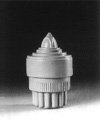 Allan McCollum. Over Ten Thousand Individual Works (detail). 1987-88.
|
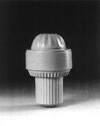 Allan McCollum. Over Ten Thousand Individual Works (detail). 1987-88.
|
 Allan McCollum. Over Ten Thousand Individual Works (detail). 1987-88.
|
 Allan McCollum. Over Ten Thousand Individual Works (detail). 1987-88.
|
 Allan McCollum. Plaster Surrogates. 1982/85.
|
 Allan McCollum. Perfect Vehicles. 1985.
|
 Allan McCollum. Perpetual Photo. 1982/84. Silver Print, 12" x 6."
|
 Edward Kienholz. For $230.00 1970. Watercolor, 16" x 20."
|
 Allan McCollum. Bleach Painting. 1969. Bleach on dyed canvas, 72" x 84."
|
 Allan McCollum. Printed shapes used to generate Untitled Paper Constructions, 1974. Offset on drawing bristol.
|
 Allan McCollum. Untitled Paper Constructions, 1974. Watercolor and pencil, each 16" x 24."
|
 Allan McCollum. Five Perfect Vehicles, 1985. Acrylic on cast hydrocal, each 8.5" x 19.5."
|
 Allan McCollum. Plaster Surrogates, 1982/84. Enamel on cast hydrostone.
|
 Allan McCollum. Over Ten Thousand Individual Works (detail). 1987-88.
|
 Allan McCollum. Over Ten Thousand Individual Works (detail). 1987-88.
|
 Allan McCollum. Over Ten Thousand Individual Works (detail). 1987-88.
|
 Allan McCollum. Over Ten Thousand Individual Works (detail). 1987-88.
|
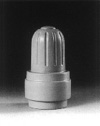 Allan McCollum. Over Ten Thousand Individual Works (detail). 1987-88.
|
 Anonymous Australian Aborigine. Toas. Mixed media, 16".
|
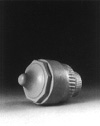 Allan McCollum. Over Ten Thousand Individual Works (detail). 1987-88.
|
 Allan McCollum. Over Ten Thousand Individual Works (detail). 1987-88.
|
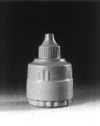 Allan McCollum. Over Ten Thousand Individual Works (detail). 1987-88.
|
 Allan McCollum. Over Ten Thousand Individual Works (detail). 1987-88.
|
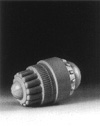 Allan McCollum. Over Ten Thousand Individual Works (detail). 1987-88.
|
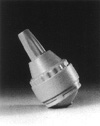 Allan McCollum. Over Ten Thousand Individual Works (detail). 1987-88. | |